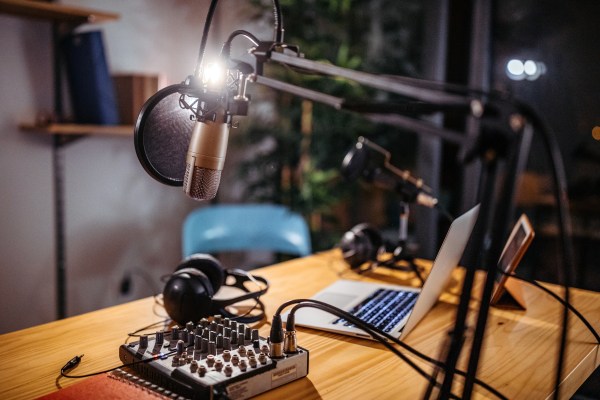Lenovo IdeaPad Slim 7 Pro review: Good power at a great price
The Lenovo IdeaPad Slim 7 Pro laptop meets the performance needs of both productivity users and creatives.


Lenovo IdeaPad Slim 7 Pro review: Good power at a great price
MSRP $1.00
Pros
Attractive price Excellent productivity performance Good creative performance High-quality display Solid buildCons
A little thick No Thunderbolt 4For many people, a larger laptop means more performance. And that’s exactly the case with the Lenovo IdeaPad Slim 7 Pro.
Like the Dell XPS 15 or even the MacBook Pro, it offers a thin, sleek build alongside some powerful components under the hood. While a generation behind the very latest chips, the IdeaPad Slim 7 Pro offers up to a AMD Ryzen 7 5800H CPU and a discrete Nvidia GeForce RTX 3050.
I reviewed the $1,011 configuration with those components, along with a 16-inch WQXGA (2,560 x 1,600) IPS display running at a blistering 120Hz. In my time with it, it proved to be a well-made, fast, and comfortable laptop for any demanding productivity user or creator with lower-end workflows — and it comes at a price that makes it a tremendous value.
Design

The IdeaPad Slim 7 Pro comes in two colors, cloud gray (silver) and storm gray (gray). My review unit was the former, and it looked a lot like a blown-up version of the IdeaPad Slim 7 Carbon that I just reviewed. There’s little in the way of bling, with just a tiny bit of chrome bordering the touchpad. The lid is a solid color with only the Lenovo logo breaking it up, and the keyboard deck is simple, with just a speaker grill above the keyboard adding some detail.
Thanks to a rounded rear edge, it’s not just a simple wedge, but the IdeaPad Slim 7 Pro is definitely a minimalist design. The MSI Creator Z16 is a more extravagant laptop, with its sleek black chassis, rounded edges, and aggressive venting, not to mention the per-key RGB backlighting in the keyboard. The MSI Summit E16 Flip falls in between, with its own all-black chassis and rose gold accents along the edges — it shares the color scheme, but not the gem-cut design, of the more extravagant HP Spectre x360 16. The IdeaPad Slim 7 Pro is a fine-looking laptop, it just doesn’t stand out.
One design element of note is the reverse notch at the top of the laptop that accommodates the webcam and infrared camera. It gives something to grab onto and allows for easy opening of the lid with one hand.
An all-aluminum chassis contributes to a very solid build, with no bending in the lid or flexing in the keyboard deck. The IdeaPad Slim 7 Pro is the equivalent of the best-made laptops such as the Dell XPS 15, making it a very robust laptop indeed. The bezels are small as well, with a 92% screen-to-body ratio that contributes to a nicely sized laptop. It’s slightly deeper and wider than the XPS 15, which makes sense given the Dell’s 15.6-inch display, and it’s slightly less deep and wide than both the Summit E16 Flip and the Creator Z16.
The IdeaPad Slim 7 Pro is thicker than both latter two machines at 0.79 inches at its widest point versus 0.67 inches for the Summit and 0.64 inches for the Creator. It’s slightly heavier than the Summit E16 Flip at 4.59 pounds versus 4.4 pounds, but lighter than the Creator Z16’s 5.07 pounds.
Connectivity is reasonable, with two USB-A 3.2 Gen 1 ports, a USB-C 3.2 Gen 2 port, a full-size HDMI 1.4b port, and a full-size SD card reader. Due to the AMD chipset, there’s no Thunderbolt 4 support. Wi-Fi 6 and Bluetooth 5.1 provide wireless connectivity.
Performance
My review unit was equipped with 16GB of RAM, a 1TB solid-state drive (SSD), and an eight-core/16-thread AMD Ryzen 7 5800H CPU. That’s an extremely fast CPU that excels in processor-intensive tasks and tends to dominate all but Intel’s high-end 11th-gen offerings. Everything will change soon, with AMD’s Ryzen 6000 series and Intel’s 12th-gen Alder Lake CPUs coming to market over the next several months.
But for now, the IdeaPad Slim 7 Pro is well-equipped for demanding productivity tasks, and thanks to an Nvidia GeForce RTX 3050 discrete GPU, it can tackle some creative tasks as well in apps that support the GPU. That’s on paper, at least.

My benchmarks provided some confirmation. The IdeaPad Slim 7 Pro was at the top of the heap in most of our benchmarks, competing strongly against the 45-watt eight-core/16-thread Intel Core Core i7-11800H in the Dell XPS 15 and the MSI Creator Z16. It took third place in Geekbench 5 behind those two machines, essentially tied them in our Handbrake test that encodes a 420MB file as H.265, and trounced them in Cinebench R23. It also took second place in the PCMark 10 Complete test, with Essentials, Productivity, and Content Creation scores that matched.
The only test where the IdeaPad Slim 7 Pro fell behind those two leaders was the PugetBench test that runs in Adobe Premiere Pro, where it scored 483. The MSI Creator Z16 was the fastest in this benchmark, and surprisingly the MSI Summit E16 Flip was second-fastest even while running a quad-core Core i7-1195G7. Intel chips tend to do better in PugetBench thanks to higher scores in the Live Playback category, but that doesn’t mean the IdeaPad Slim 7 Pro isn’t fast enough to do some creative work.
The bottom line is that this is a speedy laptop that will burn through demanding productivity workflows and serve all but the most demanding creators well. And in certain creative workflows, it will be faster than the Intel-based machines by a considerable margin.
| Laptop | Geekbench 5 | Cinebench R23 | Pugetbench Premiere Pro | Handbrake (seconds) |
PCMark 10 | 3DMark Time Spy | Fortnite (1080p Epic) |
| Lenovo IdeaPad Slim 7 16 Pro (Ryzen 7 5800H) | 1415 / 7506 | 1419 / 11262 | 483 | 102 | 6290 | 4223 | 40 fps (1200p) |
| HP Spectre x360 16 (Core i7-11390H) | 1506 / 4938 | 1547 / 5562 | 378 | 233 | 5110 | 3453 | 37 fps (1200p) |
| MSI Summit E16 Flip (Core i7-1195G7) | 1607 / 6096 | 1589 / 5344 | 552 | 175 | 5681 | 4138 | 52 fps |
| Dell XPS 15 OLED 2021 (Core i7-11800H) | 1544 / 7692 | 1513 / 9979 | 509 | 101 | 6024 | 4540 | 50 fps |
| MSI Creator Z16 (Core i7-11800H) | 1540 / 7625 | 1444 / 9615 | 738 | 103 | 6486 | 6322 | 59 fps (1200p) |
| LG Gram 16 (Core i7-1165G7) | 1573 / 5454 | 1394 / 4137 | N/A | 213 | 4827 | 1390 | 13 fps |
As a gaming laptop, the IdeaPad Slim 7 Pro did OK with its RTX 3050. It took third place in the 3DMark Time Spy test, beating out the HP Spectre x360 16 and MSI Summit E16 Flip, both of which also were equipped with the RTX 3050. The MSI was much faster in Fortnite at 59 frames per second (fps) at 1200p and Epic graphics, compared to the IdeaPad Slim 7 Pro at 40 fps. In Battlefield V and Assassin’s Creed Valhalla, however, the Lenovo was faster across the board.
Unfortunately, Civilization VI wouldn’t run and so I cannot provide those results for comparison. Overall, the IdeaPad Slim 7 Pro proved its ability to run modern games at 1200p and reasonable graphics settings, making it a strong entry-level gaming laptop.
Heat was kept under control throughout my testing, and the fan wasn’t overly loud. Lenovo includes a utility to switch into a Performance mode, but I found it to have little effect on our benchmarks. In gaming, it added a few fps at most.
Display
The IdeaPad Slim 7 Pro is built around a 16-inch WQXGA (2,560 x 1,600) IPS display running at a fast 120Hz. It was bright and colorful during my testing, and Windows 11 is smooth as silk running at such a high refresh rate. I’m enjoying the move toward 90Hz and 120Hz displays in non-gaming laptops.
According to my colorimeter, this is an above-average premium IPS panel. It is very bright at 420 nits, well above our 300-nit baseline for comfortable indoor use. The MSI Summit E16 Flip’s excellent IPS display was even brighter at 482 nits, and the MSI Creator Z16 was less bright at 385 nits. The IdeaPad Slim 7 Pro’s screen’s color width was around average at 77% of AdobeRGB and 100% of sRGB, with color accuracy of DeltaE 1.59 (1.0 or less is considered excellent).

The Summit E16 Flip was better at 89% of Adobe RGB and 100% of sRGB with an accuracy of 1.12, while the Creator Z16 did well at 91% of AdobeRGB and 100% of sRGB with an accuracy of 0.76. Where the IdeaPad Slim 7 Pro did the best was in its contrast, which came in at 1,310:1 (above our 1,000:1 threshold), beating the Summit E16 Flip’s 1,140:1 and the Creator Z16’s disappointing 800:1.
Overall, while the IdeaPad Slim 7 Pro’s display didn’t have wide or accurate enough colors for demanding creators, it was an excellent display for productivity use and media streaming. In particular, the brightness and contrast make for a display where black text pops on a white background. It’s not OLED’s inky blacks, but it’s good enough for getting work done comfortably and enjoying streaming media.
Two upward-firing speakers above the keyboard provide clear audio, with nice mids and highs and just a touch of bass. The only thing missing is volume — the sound just doesn’t get that loud. It’s fine if you’re watching Netflix by yourself, but you’ll want some external speakers for sharing and some headphones for listening to music.
Keyboard and touchpad

Lenovo seems to have switched up its non-ThinkPad keyboards, at least in the IdeaPad Slim 7 Pro and the Slim 7 Carbon. There seems to be additional travel and a more precise bottoming action, and although I found the Slim 7 Carbon’s mechanism to have slightly more of a click to it, that’s probably down to manufacturing variances. The IdeaPad Slim 7 Pro’s keyboard was very comfortable for long typing sessions, and I’d rank it close to my favorite Windows versions in HP’s Spectre line and Dell’s XPS machines. Apple’s latest MacBook keyboard remains the standard, though.
The touchpad was large enough and had a comfortable surface, with Microsoft Precision touchpad drivers providing reliable Windows 11 multitouch gesture support. The buttons had a confident action that wasn’t too loud, and I had zero complaints. The display on my review unit was touch-enabled and precise.
Privacy and security

Lenovo built in its suite of privacy and security utilities, and they worked as well on the IdeaPad Slim 7 Pro as they have on other Lenovo laptops. There’s Zero touch lock that will lock the screen and put the laptop to sleep when a user steps away, and Zero touch login that wakes up the machine and logs in via Windows 10 Hello and facial recognition when the user returns. Zero touch video playback will stop and start a video in the same way.
Oddly enough, I couldn’t find a way to block or shut down the webcam. That’s an odd omission given Lenovo’s commitment to webcam privacy in every other laptop I’ve tested.
Battery life
The IdeaPad Slim 7 Pro has 75 watt-hours of battery packed away inside, which is a little on the low side for a 16-inch laptop. Most exceed 80 watt-hours, such as the MSI Summit E16 Flip with 82 watt-hours, the MSI Creator Z16 with 90 watt-hours, and the HP Spectre x360 16 with 83 watt-hours. AMD’s Ryzen chips usually turn in solid battery results, so I was curious to see how the Lenovo performed.
As it turned out, the IdeaPad Slim 7 Pro enjoyed good but not great battery life. It managed just seven hours in our web-browsing test that cycles through a series of popular and complex websites, which is a bit on the low end. We like to see at least eight hours on this test. The Summit E16 Flip didn’t do any better, coming in at four minutes less, and the Creator Z16 was even worse at 5.5 hours. The Spectre x360 16 was considerably better at 9.8 hours, even with its power-hungry OLED display.
In our video test that loops a local Full HD Avengers trailer, the IdeaPad Slim 7 Pro hit 11.75 hours, again a bit below average but better than the Summit E16 Flip’s 10.7 hours and the Creator Z16’s eight hours. The Spectre x360 16 took the lead at 13 hours.
In the PCMark 10 Applications battery test, which is the best indication of productivity battery life, the IdeaPad Slim 7 Pro did well at 8.5 hours, with the Summit E16 Flip hitting a disappointing 6.7 hours. We didn’t run the Creator Z16 through this test, and the Spectre x360 16 wouldn’t finish it. In the PCMark 10 Gaming battery test, which shows how hard a laptop works while running on battery power, the IdeaPad Slim 7 Pro managed an average two hours.
I’d rate the IdeaPad Slim 7 Pro’s battery life as solid. If you’re not pushing the CPU too hard, you’ll get through most of a working day while unplugged, and it’s better than much of its 16-inch competition.
Pricing and availability
Right now, the IdeaPad Slim 7 Pro isn’t listed on the Lenovo.com web store, and the price I’m using in this review is the last price listed on the site. If necessary, we’ll update this review when the laptop makes it back to the Lenovo store and make tweaks based on any change in price.
Our take
The Lenovo IdeaPad Slim 7 Pro is a welcome addition to the 16-inch laptop family. It’s well-built, reasonably thin and light, and fast enough for demanding productivity users and less demanding creators alike. And the display stands out for its brightness, contrast, and 120Hz refresh rate. Considering the $1,011 price, this is one heck of a value.
The biggest caveat with the IdeaPad Slim 7 Pro, and this applies to any laptop purchased right now, is that it’s a little behind the curve in the CPU department. With AMD’s Ryzen 6000 series coming this year, we’re in a bit of a transition period. Of course, we have no idea how long it will take for the new chip to make it to laptops like this one, and the IdeaPad Slim 7 Pro is fast enough that it’s well worth buying today.
Are there any alternatives?
The MSI Creator Z16 is a laptop that’s also fast and well-built, and its display has better colors while being less bright and offering inferior contrast. It’s also more expensive.
The MSI Summit E16 Flip is another interesting option. It has its own excellent 16-inch 16:10 IPS display, although it doesn’t quite stack up to the IdeaPad’s. It’s also not as fast and it’s battery life falls slightly behind.
If you’re willing to step down just a tiny bit in display size, then the Dell XPS 15 OLED is a solid alternative. It has similar if not better build quality, an even better display, and its performance is better for creative workflows using Adobe software. It’s also more expensive, especially when heavily configured.
How long will it last?
The IdeaPad Slim 7 Pro is robust and should last for years of service. Its components might be eclipsed this year, but for now, it’s state-of-the-art and will run Windows 11 well for years. As always, we’d love to see a warranty longer than one year.
Should you buy it?
Yes. For the money, the IdeaPad Slim 7 Pro is a great 16-inch alternative that will meet most people’s performance needs.

 Tfoso
Tfoso 

































